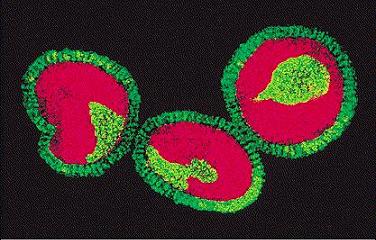Influenza is an infectious disease caused by the influenza virus. The disease is commonly called flu or grippe. The word influenza is sometimes used to refer generally to either influenza or similar illnesses.
The symptoms of influenza include chills, fever, headache, aches, and weakness. The symptoms usually disappear in about a week. The patient's resistance may be lowered, so that secondary infections, such as bacterial pneumonia, follow the influenza.

Influenza Viruses
How influenza spreads. Influenza is mainly a respiratory disease. The virus is inhaled and comes in contact with cells of the upper air passages. It penetrates the cells that line these passages and reproduces within them. In time, new influenza viruses are released from the infected cells and infect other cells along the respiratory tract. Influenza may spread deep within the lungs. The virus may also be carried away in exhaled air and infect other people.
One of the worst global epidemics of influenza occurred in 1918-1919. About 20 million people, including more than 500,000 Americans, died in this epidemic. In 1957-1958, Asian flu caused a worldwide epidemic, as did Hong Kong flu in 1968-1969. Far fewer deaths resulted from these epidemics, due largely to the control of secondary infections with antibiotics.
There are three main types of influenza viruses: type A, type B, and type C. Types B and C appear to infect only human beings. Type A can infect people and certain animals, such as swine. The animals may then carry and transmit the infection. Epidemics may be caused by type A or type B. Outbreaks of influenza involving both types A and B also have occurred.
Robert E. Marquis, Ph.D., Professor of Microbiology and Immunology, University of Rochester Medical School. -
|

